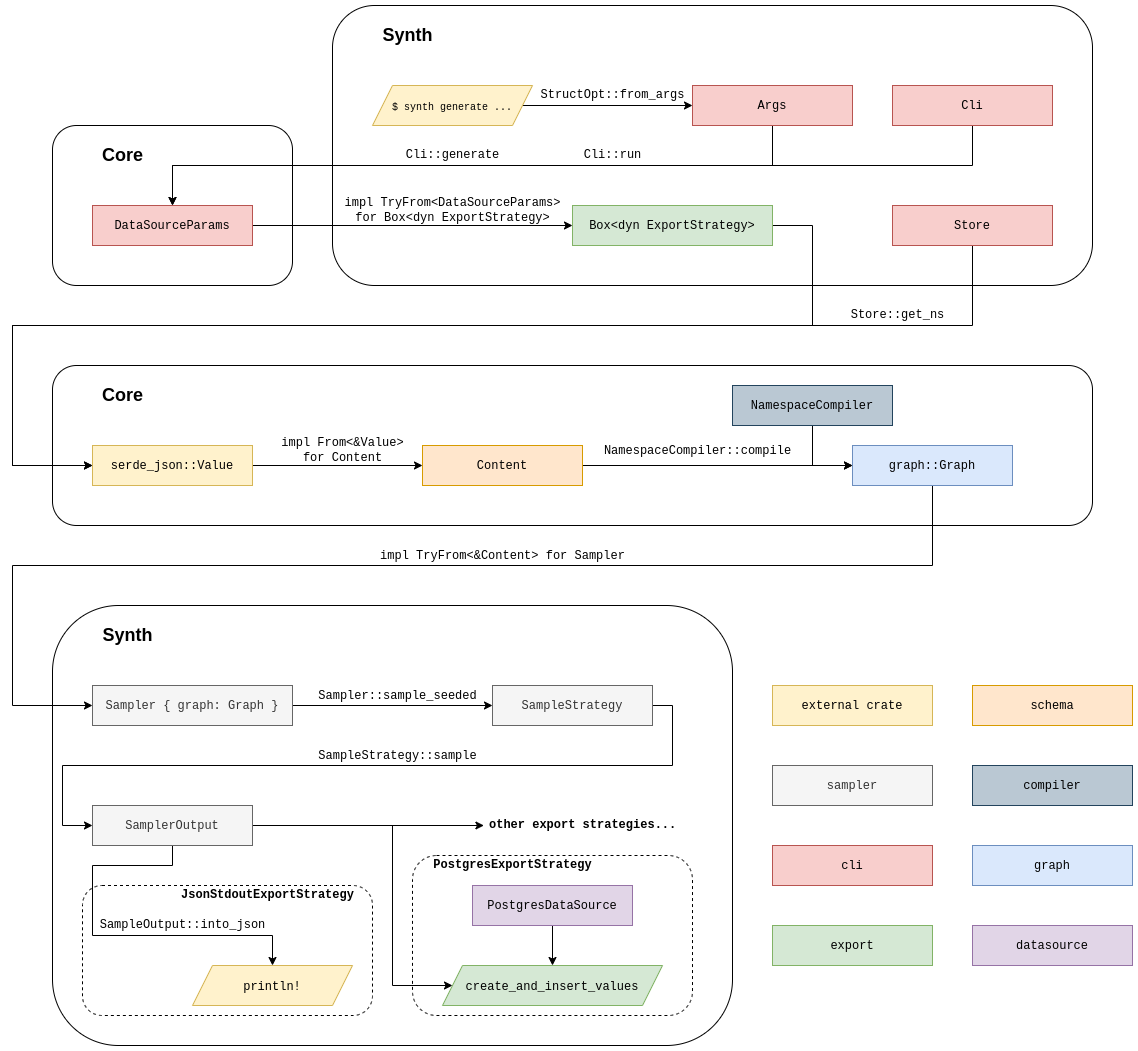-
Notifications
You must be signed in to change notification settings - Fork 108
Generating
WiredSound edited this page Feb 3, 2022
·
2 revisions

Diagram accurate as of commit d9cbb1a299affed4d543eb06704b65679ab34d96, Synth version 0.6.4, January 11th 2022
Likely one the first commands a new user of Synth would encounter is synth generate. As the name would imply, this command is used to generate synthetic data based on the JSON schema files found the namespace specified. The generated data may then be written to STDOUT or it may be pumped directly into a database or file. In order to do this, input data is passed through a few distinct stages:
- The
structoptcrate is first used to parse command-line arguments - this extracts information such as the name of the namespace to generate from (a directory path essentially), how to output the generated data (to a database? or to STDOUT?), the PRNG seed, etc. -
JSON schema files are read from the namespace directory and each parsed to
synth_core::schema::Contentinstances (an abstract representation of a collection schema).- This parsing is done using the
serde_jsoncrate to parse the JSON, and theFrom<serde_json::Value>implementation forContentis used to obtain a finalContentinstance for each schema.
- This parsing is done using the
- Next, an 'export strategy' is determined based on the
--toparameter parsed to thesynth generatecommand.- There exists a trait
synth::cli::ExportStrategywhich represents some way of outputting data generated from a Synth namespace. Types that implement this trait includeJsonStdoutExportStrategy,PostgresExportStrategy, and various others (see the submodules ofsynth::cli).
- There exists a trait
- Each export strategy uses the 'sampler' to generate a
SamplerOutputinstance.-
SamplerOutputstoressynth_core::graph::Valueinstances which define generated data in a way that is not specific to any one export strategy. - The sampler in short works by constructing a acyclic graph (
synth_core::Graph) from the namespace by means of the compiler, and then traversing the graph to generate data.
-
- Once data has been generated, it is up to each individual export strategy to determine how to take the nonspecific
Values ofSamplerOutput, convert them into the appropriate data type, and then output to a database or STDOUT.